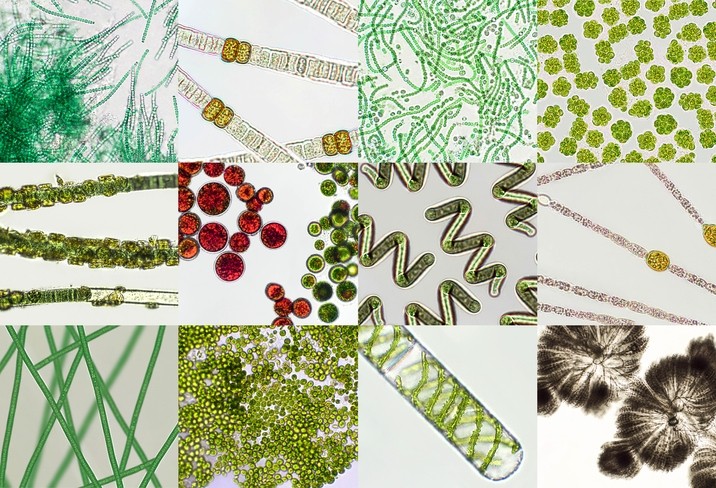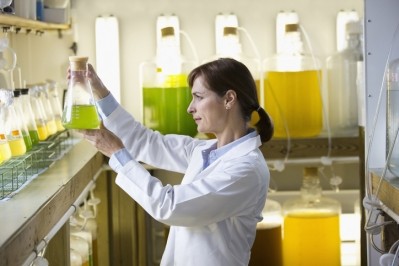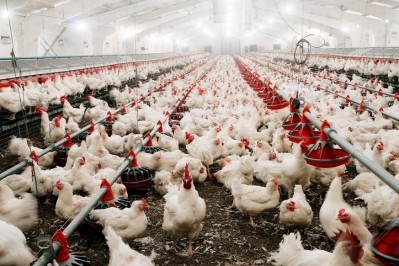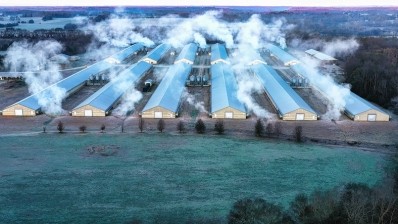Science stacks up for microalgae as feed additives; can cost obstacle be overcome?

For the last decade, scientists have been exploring the potential of seaweeds and microalgae as feed additives. As well as having a rich bioactive compound content, they have compelling sustainability credentials: they do not compete with land-based crops, nor do they require fertilizers, pesticides, or fresh water to grow.
A paper published in the journal Antioxidants has documented the science so far, including latest research elucidating the antioxidant molecules present in microalgae and their role as feed additives for improving animal health and performance, product quality and livestock environmental impact.
Alexandros Mavrommatis, lead author and assistant professor, animal nutrition, at the Agricultural University of Athens, told FeedNavigator: “I would summarize this review and the findings of my ten years of research by saying that algae are a non-competitive culture with high metabolic plasticity. They can even be cultivated in water wastes and other water-based byproducts and can transform carbon dioxide to nutrients. Their rich bioactive content can be exploited by the livestock industry for multiple purposes - as substitutes for synthetic vitamins, growth promoters and antimicrobials.”
Antioxidant compounds
Microalgae live in habitats under high solar irradiation and consequently contain a wide range of antioxidant compounds, which protect them from radiation and oxidation damage. High-value antioxidant compounds produced by microalgae include polyunsaturated fatty acids (PUFAs), carotenoids (including astaxanthin and lutein), chlorophylls, phycobiliproteins and phenolic compounds.
Researchers have discovered that these compounds have immunomodulation, anti-inflammatory, neuroprotective, antimicrobial, antiviral and anthelmintic properties. Whilst all these properties are potentially beneficial to animal health, some are more important and robustly evidenced than others.
“I would say the health benefit supported by the most consistent evidence is the ability of microalgae to suppress targeted pro-inflammatory responses,” said Mavrommatis.
“Factory farming conditions combined with genetic breeding for high productivity can expose animals to pro-inflammatory responses. Additionally, a long-term pro-inflammatory condition can lead to chronic inflammation, exposing animals to numerous health issues,” he explained.
Scientists have found that long-chain PUFAs present in microalgae could regulate animals’ pro-inflammatory response through the production of eicosanoids with much less pro-inflammatory power or by inhibiting pro-inflammatory cytokines, resulting in the suppression of low-grade inflammation and stress.
Reducing AMR
A second area where Mavrommatis believes there is great potential for microalgae to make a difference to animal health is in harnessing their antimicrobial properties to reduce reliance on antibiotics.
The review highlighted several studies that found evidence of microalgae promoting intestinal development, managing digestive disorders, and boosting immunity in animals.
“These sets of evidence demonstrate that microalgae and their derivatives could be useful ingredients in animal feed for minimizing the dependence on antibiotics, aiming to control antibiotic resistance and support animal health using natural bioactive compounds,” wrote the researchers.
One Health
Thirdly, Mavrommatis suggested that microalgae could contribute to the ‘One Health’ concept advocated by the WHO, which recognizes that human and animal health are interdependent and require a collaborative global approach.
“The antioxidant properties of algae could suppress the accumulation of oxidation byproducts in animal products consumed by humans,” he said.
For example, the review noted that there is potential for substituting synthetic antioxidants such as vitamin E with microalgae in animal feed.
More research needed
Research into the relationships between the bioactive compounds present in microalgae and other health areas is still in its infancy, according to Mavrommatis.
“More experimentation is needed in order to understand the advanced performance observed in animals supplemented with algae and the algae’s bioactive molecules through a deep exploration of their modes of action,” he said.
Specifically, he said his team will now focus on three areas: the direct substitution of synthetic vitamins that have been associated with human health risks; the potential of algae in animal health for managing common challenges to livestock health such as heat stress, pathogens and the periparturient period; and the transfer efficiency of algae bioactive compounds (antioxidants and fatty acids) to animal products (milk, meat and eggs).
Overcoming obstacles
There are, however, some practical barriers cited in the review that need to be surmounted if microalgae are to be used in animal diets. Firstly, the digestibility of microalgal biomass can be impaired by the cell walls of most microalgal species, and secondly, the cost of production is prohibitively high.
Regarding the inhibition of nutrient release by the cell walls, Mavrommatis said that provided scientists have a deep understanding of each species’ bioactive compounds, this doesn’t have to be a limiting factor.
“Cell wall indigestibility in monogastrics can be overcome through the use of carbohydrate-active enzymes or by extracting bioactive compounds of interest and supplementing with these rather than algae per se,” he said.
He is also convinced that as R&D in algae cultivation advances, and demand from industry increases, the cost of production will reach a viable level.
Asked how close the feed industry is to substituting feed additives with microalgae, he replied: “Technically, I would say that it is feasible in the very near future, however, it will require some effort to make microalgae financially sustainable due to the cost of cultivation. But I am optimistic that the cost will balance the health benefits very soon. Then, microalgae and their extracts will directly compete with conventional additives and strategies.”
Source: Antioxidants 2023, 12, 1882.
DOI: https://doi.org/10.3390/antiox12101882
“Microalgae as a Sustainable Source of Antioxidants in Animal Nutrition, Health and Livestock Development”
Authors: Mavrommatis, A.; Tsiplakou, E.; Zerva, A.; Pantiora, P.D.; Georgakis, N.D.; Tsintzou, G.P.; Madesis, P.; Labrou, N.E.











